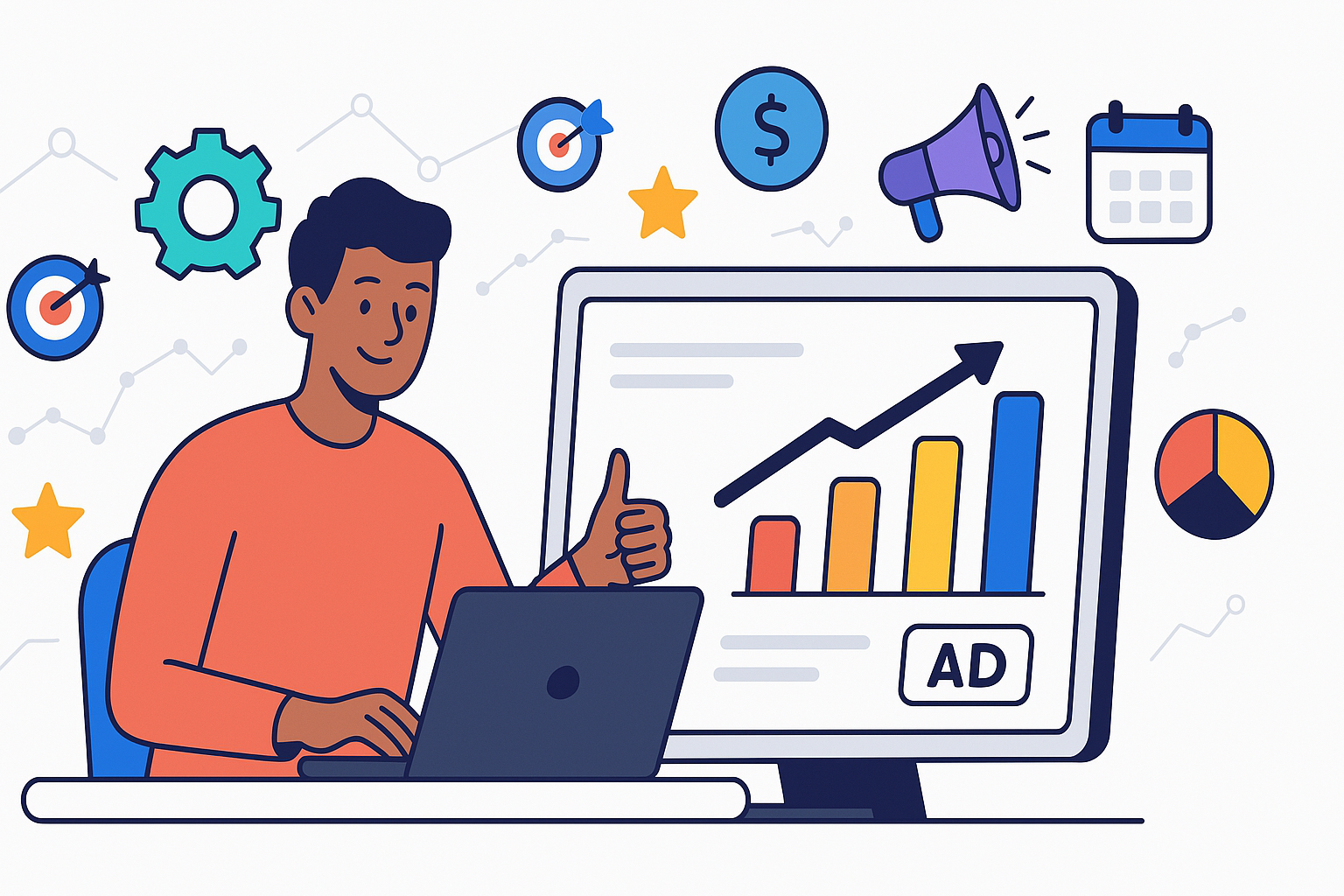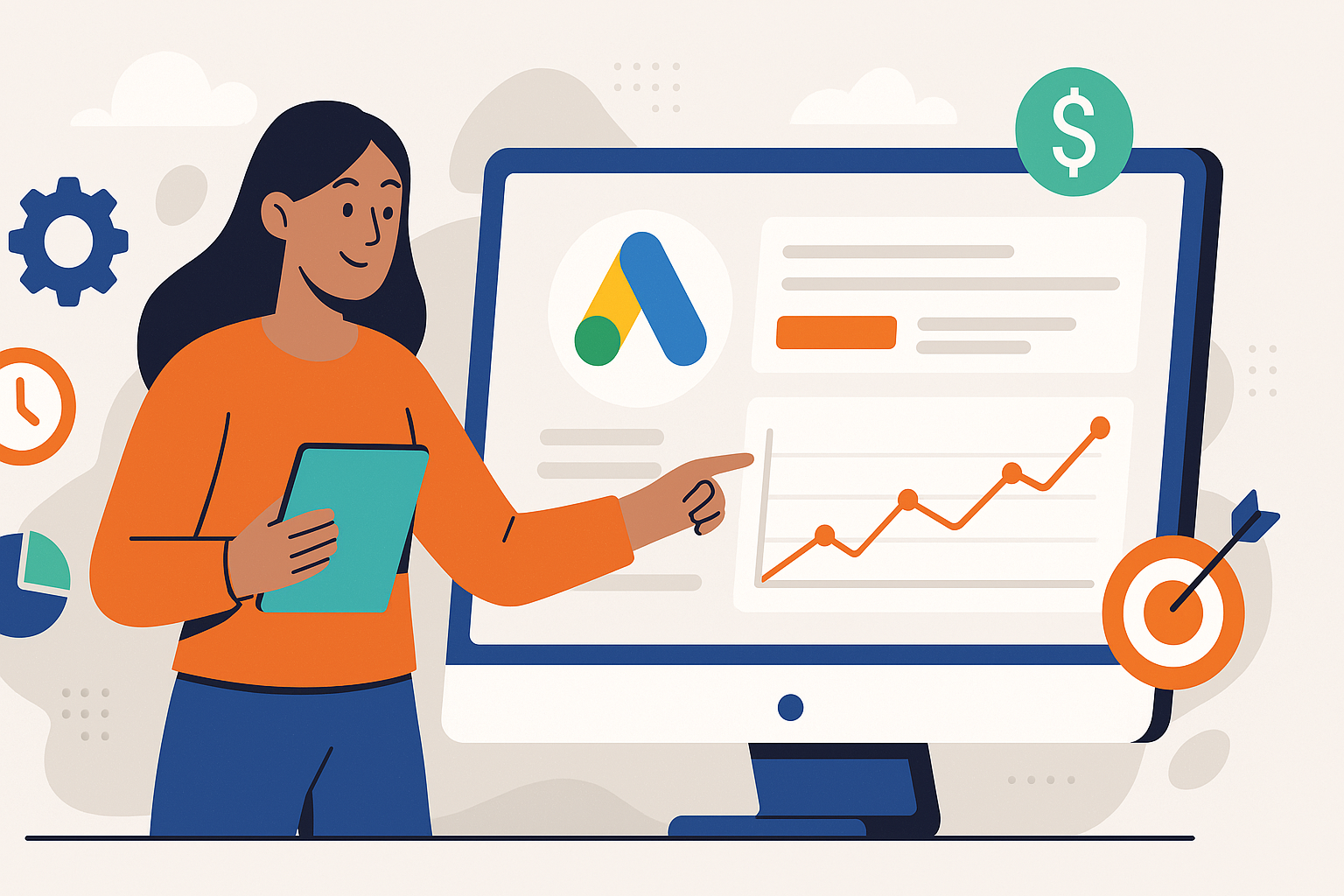The Intricate Engine: How Google Ads Shapes Digital Interaction
by Francisco Kraefft on 15 Feb, 2024
Google Ads is more than just an advertising platform; it's a dynamic, multifaceted ecosystem that fundamentally shapes how businesses connect with audiences online. Its influence permeates the digital landscape, orchestrating billions of daily interactions between searchers and solutions. Understanding how Google Ads is structured, how it evolves, and the principles governing its operation is crucial not just for marketers, but for anyone seeking insight into the modern digital economy. It's a story of technological evolution, complex auction dynamics, vast data utilization, and applied psychology. We delve into the core components of this powerful engine, revealing the intricate mechanisms that determine visibility, engagement, and ultimately, business success in the pay-per-click arena. Prepare to explore the architecture behind the ads you see every day, a system fundamentally explored in our guide on what Google Ads is and how it works.
From AdWords Origins to AI-Powered Dominance: The Google Ads Evolution
The journey of Google Ads began in 2000 as Google AdWords, a relatively simple system offering keyword-targeted text ads alongside search results. Its brilliance lay in its pay-per-click (PPC) model, a departure from the impression-based standards of the time. This performance-oriented approach resonated instantly.
Key evolutionary milestones mark its trajectory:
- Quality Score (QS): Introduced early on, QS shifted the focus from purely bid-based rankings to include ad relevance, landing page experience, and expected click-through rate (CTR). This incentivized better user experiences and leveled the playing field slightly, preventing sheer budget from guaranteeing top spots. Learn more about how Google Ads Quality Score works.
- Expansion Beyond Search: AdWords branched out, incorporating the Display Network, YouTube ads (video), Shopping ads (product listings), and Mobile App campaigns, evolving into a comprehensive advertising suite.
- Automation and Machine Learning: The integration of AI has been the most significant recent transformation. Smart Bidding strategies (like Target CPA, Target ROAS, Maximize Conversions), Responsive Search Ads (RSAs), and Performance Max campaigns leverage machine learning to optimize bids, creatives, and targeting in real-time, processing signals at a scale impossible for humans.
- Rebranding to Google Ads (2018): This signaled the platform's broadened scope beyond just 'words' and search, encompassing its diverse formats and networks.
This evolution tells a story of relentless adaptation, driven by technological advancements and a commitment to delivering relevance to users and results to advertisers. Understanding this history provides context for how Google Ads is today – a sophisticated, AI-driven platform demanding strategic oversight.
Beyond the Bid: Unpacking the Intricate Google Ads Auction
Many perceive Google Ads as a simple highest-bidder-wins auction. The reality is far more nuanced. Every time a search query triggers ads, a lightning-fast auction occurs to determine which ads show and in what order. The core metric here is Ad Rank. Uncover the secrets in our post about how the Google Ads auction works.
Ad Rank is calculated roughly as:
Ad Rank = Maximum CPC Bid × Quality Score + Ad Extension / Format Impacts
Let's break this down:
- Maximum CPC Bid: This is the highest amount you're willing to pay for a click. It's a crucial input, but not the sole determinant. Factors influencing this are discussed in our article on how much Google Ads cost.
- Quality Score (QS): This is Google's rating (1-10) of the quality and relevance of your keywords, ads, and landing pages. Higher QS means Google perceives your ad as more useful to the searcher. Its components include:
- Expected CTR: How likely is your ad to be clicked when shown?
- Ad Relevance: How closely does your ad match the intent behind the user's search?
- Landing Page Experience: Is your landing page relevant, useful, easy to navigate, and trustworthy?
- Ad Extension / Format Impacts: Using relevant ad extensions (sitelinks, callouts, structured snippets, etc.) and ad formats can positively impact your Ad Rank, providing more information and potentially improving CTR.
A high Quality Score allows you to achieve a better Ad Rank potentially even with a lower bid than a competitor. Conversely, a low QS requires significantly higher bids for the same position. This mechanism incentivizes advertisers to create relevant, high-quality experiences, aligning advertiser goals with user satisfaction. The auction isn't just about cost; it's a complex interplay of bid strategy, relevance, and expected user experience, revealing how Google Ads is designed to balance monetization with user value.
The Unseen Force: How Data Fuels Google Ads Precision and Performance
Data is the lifeblood of Google Ads. The platform runs on a colossal engine that constantly collects, analyzes, and interprets data signals to inform every aspect of campaign performance. Understanding this data dependency is key to grasping how Google Ads is so powerful.
Key data types and their roles:
- User Data & Intent Signals: Google analyzes search queries, location, device, time of day, past search history (where permissible), and contextual signals (like the content of a website on the Display Network) to understand user intent in real-time. This allows for precise audience targeting.
- Performance Data: Metrics like impressions, clicks, CTR, conversion rates, cost-per-conversion, and ROAS are continuously tracked. This provides feedback on what's working and what isn't, enabling optimization.
- Conversion Tracking: Implementing robust conversion tracking (tracking sales, leads, sign-ups, calls, etc.) is paramount. This data tells Google which keywords, ads, audiences, and campaigns are actually driving valuable business outcomes. It directly fuels automated bidding strategies, guiding the AI towards your specific goals.
- Competitive Data: Auction Insights reports provide visibility into how your performance compares to other advertisers participating in the same auctions, offering valuable competitive context.
At iVirtual, we recognize that harnessing this data is fundamental. Our data-driven approach means meticulously setting up tracking (often using tools like Google Analytics), analyzing performance trends, segmenting audiences based on data insights, and iteratively testing hypotheses. The platform's algorithms thrive on clean, accurate data. Effectively managing Google Ads means becoming proficient not just in ad creation, but in data interpretation and application – leveraging the platform's intelligence for measurable growth.
Decoding Intent: The Psychology Behind Effective Google Ads
Beyond the algorithms and data points, how Google Ads is effective also hinges on understanding human psychology. Successful campaigns tap into the motivations, biases, and decision-making processes of potential customers.
Consider these psychological levers:
- Search Intent Alignment: Matching your ad copy and landing page precisely to what the user is actually looking for (informational, navigational, transactional intent) is crucial. Misalignment leads to low relevance, poor QS, and wasted spend.
- Urgency and Scarcity: Limited-time offers ("Sale ends Friday!"), low stock warnings ("Only 3 left!"), or countdown timers can prompt faster decisions by leveraging FOMO (Fear Of Missing Out).
- Social Proof: Incorporating reviews, ratings (seller ratings extensions), testimonials, or case studies builds trust and credibility. People are influenced by the actions and opinions of others.
- Loss Aversion: Framing benefits in terms of avoiding a loss ("Stop wasting money on X") can sometimes be more powerful than framing them as gains ("Start saving money on Y").
- Authority: Highlighting expertise, certifications, or awards can position your business as a trusted authority, making users more likely to click and convert.
- Cognitive Ease: Clear, concise ad copy and simple, intuitive landing pages reduce mental effort, making engagement more likely. Avoid jargon and complex navigation. Find tips on how to build a high-converting landing page.
Crafting compelling ad copy, selecting persuasive calls-to-action, designing high-converting landing pages, and even structuring ad groups thematically all involve applying psychological principles. It requires stepping into the searcher's shoes and understanding their mindset at the moment of the search.
Mastering the Maze: The Art and Science of Thriving with Google Ads
Google Ads is undeniably powerful, but it's also increasingly complex. The rise of AI and automation (like Performance Max) simplifies some execution aspects but simultaneously demands greater strategic input and oversight. Privacy changes (like the phasing out of third-party cookies) necessitate new approaches to targeting and measurement. Thriving in this environment requires a blend of analytical rigor (the science) and strategic creativity (the art).
The Science involves:
- Data Analysis: Deeply understanding performance metrics, identifying trends, segmenting data.
- Technical Setup: Ensuring accurate conversion tracking, feed optimization (for Shopping), and proper campaign structuring.
- Testing Methodology: Employing A/B testing for ads, landing pages, and bidding strategies systematically.
The Art involves:
- Strategic Planning: Defining clear objectives, understanding the customer journey, and allocating budget effectively across campaign types.
- Creative Development: Writing compelling ad copy, designing engaging display ads, producing effective video creative.
- Audience Insight: Going beyond demographics to understand psychographics, motivations, and pain points.
- Adaptability: Staying abreast of platform changes, industry trends, and evolving user behavior.
Successfully navigating how Google Ads is today means embracing both sides. Automation assists, but human strategy directs. Data informs, but creative insight persuades. This is where expertise becomes invaluable. Agencies like iVirtual, a dedicated performance marketing agency, provide the necessary blend of analytical capability and strategic marketing acumen to turn the complexity of Google Ads services into a potent engine for scalable business growth. Unsure how to choose the right partner? Consider these questions to ask a Google Ads expert.
Conclusion
Google Ads is not merely a platform; it's an intricate, evolving ecosystem built on layers of technology, data analysis, and psychological understanding. From its origins to its AI-driven present, it operates through a sophisticated auction that values relevance as much as bids. Its effectiveness is intrinsically tied to the quality and interpretation of data, fueling precision targeting and performance optimization. Ultimately, mastering Google Ads requires a dual approach – the scientific rigor of data analysis combined with the art of strategic insight and creative execution. Understanding how Google Ads is structured and operates unlocks its immense potential, leading many businesses to conclude that Google Ads is worth it.
Ready to unlock the true potential of Google Ads for your business? Let our data-driven experts craft a winning strategy. Contact us today.


